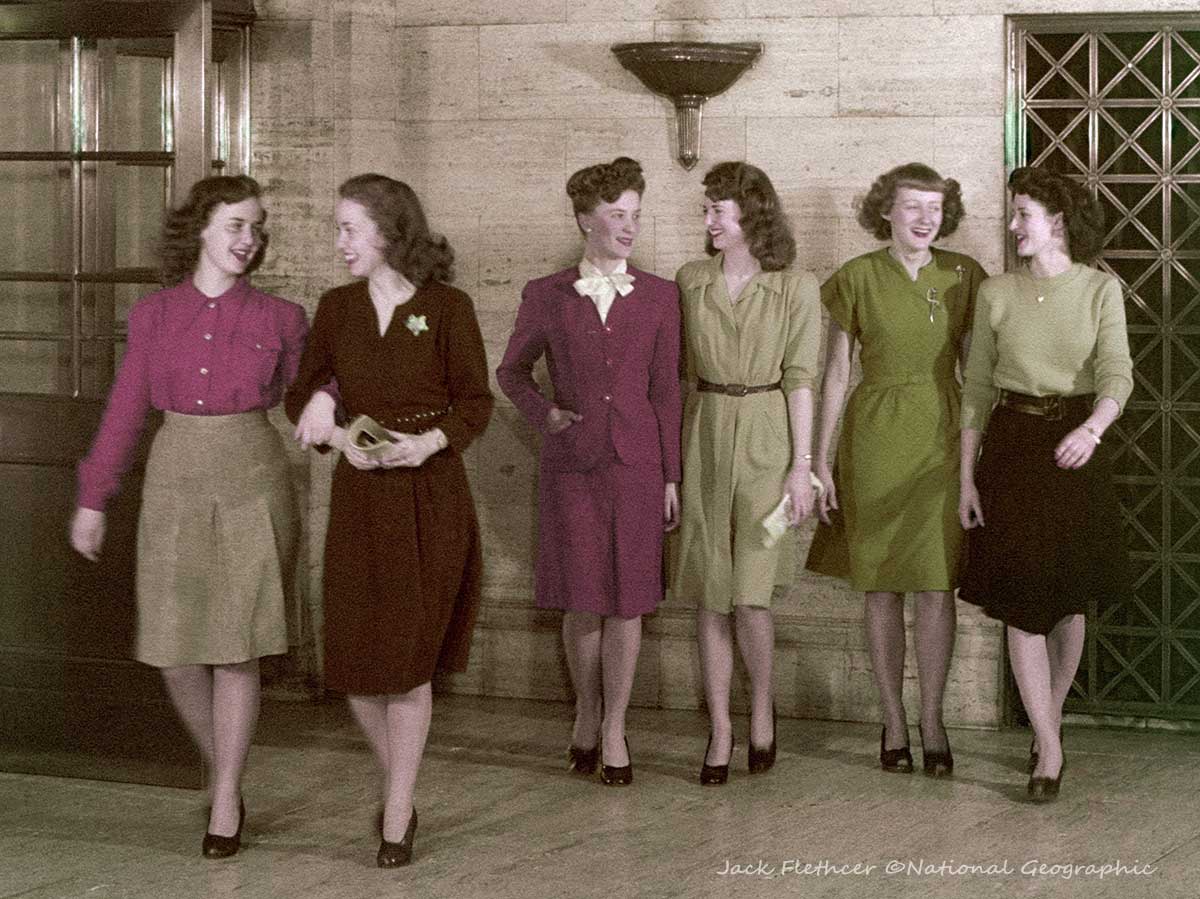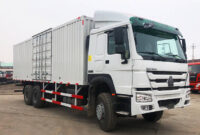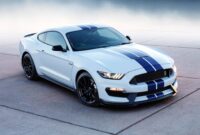1940s Chevy Pickup Trucks For Sale: A Comprehensive Guide to Owning a Piece of Automotive History pickup.truckstrend.com
The rumble of a vintage engine, the distinctive lines of an era gone by, and the sheer utility blended with timeless design – these are the hallmarks of the 1940s Chevy Pickup Truck. More than just a vehicle, these iconic machines represent a pivotal moment in American history, embodying the resilience of the post-war era and the burgeoning spirit of prosperity. For enthusiasts, collectors, and those simply yearning for a tangible connection to the past, the allure of a 1940s Chevy pickup for sale is undeniable.
This comprehensive guide aims to navigate the fascinating world of these classic workhorses, offering insights into their legacy, the reasons behind their enduring appeal, practical advice on finding and evaluating them, and a realistic look at the costs and considerations involved in bringing one home. Whether you dream of a meticulous restoration, a powerful resto-mod, or simply a charming driver, understanding the nuances of these vintage trucks is the first step towards owning a truly special piece of automotive history.
1940s Chevy Pickup Trucks For Sale: A Comprehensive Guide to Owning a Piece of Automotive History
A Glimpse into the Past: The Legacy of 1940s Chevy Pickups
The 1940s were a transformative decade for Chevrolet, particularly for its truck division. The early years of the decade saw production heavily influenced by World War II, with civilian vehicle manufacturing significantly curtailed or repurposed for military use. Chevy’s trucks, known for their rugged durability, played a crucial role in the war effort.
Pre-War and Wartime Models (1941-1947 AK Series):
Before and during the war, Chevrolet’s truck lineup was characterized by what is now known as the "AK Series." These trucks, produced from 1941 through 1947, featured a more angular, utilitarian design, a direct evolution of pre-war aesthetics. They were robust, dependable, and primarily powered by Chevrolet’s renowned "Stovebolt Six" inline-six engine. While wartime restrictions meant fewer civilian models were produced, those that did roll off the line often sported features like painted grilles instead of chrome, reflecting material shortages. Finding an early 1940s AK Series in good condition can be a unique challenge, as many were worked hard and few were preserved.
The Post-War Revolution (1947-1954 Advance-Design Series):
The true game-changer arrived in mid-1947 with the introduction of the "Advance-Design" series. This revolutionary line of trucks, produced from 1947 through 1954, marked a significant departure from previous designs. With their rounded, flowing fenders, five-bar horizontal grille, and more comfortable cabs, they were a stylish and functional upgrade. These trucks were designed to be more user-friendly, offering improved visibility, better seating, and a more car-like driving experience. The Advance-Design series quickly became the best-selling truck in America and remains one of the most recognizable and beloved classic pickups today. When people envision a "1940s Chevy pickup," it’s often the iconic 1947-1949 Advance-Design models that come to mind.
Both the AK and Advance-Design series were built on sturdy ladder frames, utilizing solid axles and leaf springs, contributing to their reputation for durability and ease of maintenance. Their mechanical simplicity makes them highly appealing for modern-day enthusiasts looking for a hands-on project or a reliable classic.
Why Buy a 1940s Chevy Pickup Today? The Enduring Appeal

The decision to purchase a vintage vehicle is often driven by passion, and 1940s Chevy pickups offer a wealth of reasons to ignite that flame:
- Timeless Aesthetics: The design of these trucks, particularly the Advance-Design series, is universally recognized and admired. Their rounded lines, classic grilles, and functional beauty evoke a powerful sense of nostalgia and Americana. They simply look "right."
- Mechanical Simplicity: Compared to modern vehicles brimming with complex electronics, 1940s Chevy pickups are refreshingly straightforward. Their mechanical nature makes them easier for enthusiasts to understand, diagnose, and repair, often with basic tools and readily available parts.
- Versatility in Customization: These trucks are a blank canvas. Whether you aim for a concourse-quality original restoration, a subtly modernized "resto-mod" with modern conveniences (power steering, disc brakes, A/C), or a full-blown hot rod with a powerful V8, the possibilities are endless.
- Strong Community Support: The popularity of these trucks has fostered a vibrant community of owners, restorers, and parts suppliers. Forums, clubs, and specialized businesses provide invaluable resources, advice, and a shared passion.
- Potential for Investment: While not guaranteed, well-maintained, professionally restored, or tastefully customized 1940s Chevy pickups have shown a consistent track record of holding or appreciating in value. They are tangible assets that can also be enjoyed.
- The "Cool Factor": Driving a 1940s Chevy pickup is an experience unlike any other. They turn heads, spark conversations, and connect you to a bygone era. It’s a statement of style and appreciation for classic engineering.

Navigating the Market: Where to Find Your Dream Truck

Finding the right 1940s Chevy pickup requires patience, research, and knowing where to look.
- Online Marketplaces & Auction Sites:
- eBay Motors: A vast marketplace with a wide range of conditions and prices.
- Hemmings.com: A premier source for classic cars, offering curated listings from private sellers and dealers.
- ClassicCars.com: Another extensive database of classic vehicles for sale.
- Bring a Trailer (BaT): Known for higher-quality, well-documented vehicles, often fetching premium prices. Great for seeing market trends.
- Facebook Marketplace & Dedicated Groups: Many regional and model-specific classic truck groups where private sellers list vehicles. Be cautious and verify information.
- Specialized Classic Car Dealerships: Dealers who specialize in vintage vehicles often have a selection of restored or driver-quality trucks. They typically offer more transparency and potentially some level of warranty or inspection reports.
- Classic Car Auctions: Events like Barrett-Jackson, Mecum Auctions, or local collector car auctions can be excellent places to find unique examples, but be prepared for competitive bidding and buyer’s premiums.
- Word of Mouth & Car Shows: Networking within the classic car community at local car shows, swap meets, or enthusiast events can lead to discovering trucks that aren’t publicly advertised.
What to Look For: Essential Inspection Checklist
Once you’ve found a potential candidate, a thorough inspection is paramount. Don’t rush this stage.
- Rust: The Ultimate Deal Breaker: This is the biggest enemy of vintage steel. Pay close attention to:
- Frame: Inspect the entire chassis for heavy scaling, cracks, or repairs.
- Cab: Cab corners, floor pans, firewall, door bottoms, and roof gutters are common rust traps.
- Bed: Bed floor, inner and outer fender wells, and tailgate.
- Fenders & Running Boards: Check for bondo or extensive patch panels hiding significant corrosion.
- Engine & Drivetrain:
- Originality vs. Swap: Decide if you want the original "Stovebolt Six" or a modern engine swap (e.g., small-block Chevy V8).
- Running Condition: Does it start easily? Any strange noises, excessive smoke, or leaks?
- Transmission: Manual transmissions should shift smoothly without grinding. If an automatic, check fluid condition and shift points.
- Under the Hood: Look for shoddy wiring, patched hoses, or signs of neglect.
- Body & Paint:
- Straightness: Check panel gaps, alignment of doors and fenders. Look down the sides for ripples or waves indicating poor bodywork.
- Bondo/Filler: Use a magnet to detect excessive body filler.
- Paint Quality: Look for orange peel, fisheyes, or chips. A good paint job is expensive.
- Interior:
- Seat: Condition of upholstery and springs.
- Dash & Gauges: Are all gauges functional? Is the dash cracked or modified?
- Windows & Doors: Do they open, close, and latch properly?
- Chassis, Suspension & Brakes:
- Steering: Excessive play in the steering wheel indicates worn components.
- Suspension: Look for sagging, broken springs, or worn bushings.
- Brakes: Test pedal feel. Original drum brakes require more effort than modern disc systems. Check for leaks.
- Documentation: A clear title is non-negotiable. Service records, restoration photos, and previous ownership history add significant value and peace of mind.
Practical Advice: If you’re not mechanically inclined, hire a reputable pre-purchase inspector specializing in classic cars. It’s a small investment that can save you thousands. Don’t be afraid to walk away from a deal that doesn’t feel right.
Restoration vs. Customization: Your Project, Your Vision
Once you’ve acquired your 1940s Chevy pickup, the next major decision is its future.
- Full Restoration (Original): This involves meticulously returning the truck to its factory-original condition, often using period-correct parts, colors, and materials.
- Pros: Historical accuracy, potential for higher value among purists, a sense of preserving history.
- Cons: Can be extremely expensive and time-consuming, finding rare original parts can be challenging.
- Resto-Mod / Customization: Blending classic aesthetics with modern performance, safety, and comfort features. This often includes engine swaps (e.g., V8), upgraded suspension (independent front suspension), power steering, disc brakes, air conditioning, and modern electronics.
- Pros: Improved drivability, reliability, and safety for modern traffic; personalized style; allows for more daily use.
- Cons: Can significantly alter the truck’s originality, potentially impacting value for some collectors. Costs can escalate quickly.
- Driver Quality: A truck that runs and drives reliably, is presentable but not perfect. It might have minor flaws, older paint, or some patina.
- Pros: Lower entry cost, immediate enjoyment, less pressure about every scratch.
- Cons: May require ongoing maintenance, not a show vehicle.
Your budget, mechanical skill level, and intended use for the truck will largely dictate which path is right for you.
The Cost of Ownership: Beyond the Purchase Price
The purchase price is just the beginning. Factor in these additional costs:
- Restoration/Customization Costs: This can easily exceed the purchase price. A professional, frame-off restoration can range from $50,000 to well over $100,000. Even a basic mechanical overhaul can run several thousands.
- Maintenance & Repairs: Even a well-maintained classic will require attention. Parts are generally available, but labor from a specialist can be costly.
- Insurance: Classic car insurance is often surprisingly affordable, but policies vary.
- Storage: Secure, dry storage is crucial to prevent rust and deterioration.
- Upgrades: If you plan on driving it regularly, consider investing in modern tires, LED lighting for safety, and potentially a better stereo.
- Fuel: While the Stovebolt Six is relatively economical, a powerful V8 swap will consume more fuel.
1940s Chevy Pickup Trucks For Sale: Estimated Price Guide
Prices for 1940s Chevy pickup trucks vary dramatically based on condition, model year (AK vs. Advance-Design), originality, and quality of any restoration or customization. This table provides a general estimate.
| Condition Category | Description | Estimated Price Range (USD) | Key Considerations |
|---|---|---|---|
| Barn Find / Project | Non-running, significant rust, missing parts, needs full restoration. Often comes with little to no documentation. | $3,000 – $15,000 | Ideal for experienced restorers or those with deep pockets. Expect to spend significantly more than the purchase price on restoration. Verify VIN and title availability. Major rust can make it a parts donor only. |
| Driver Quality | Runs and drives, roadworthy with minor issues. May have visible rust, older paint, worn interior, but is generally solid. Suitable for immediate use or light restoration. | $15,000 – $35,000 | Good entry point for enthusiasts. Inspect thoroughly for hidden rust or mechanical issues that could escalate costs. Often represents the best value for a usable classic. |
| Partially Restored | Significant work completed (e.g., new engine, bodywork, or paint) but still requires finishing touches, interior work, or mechanical sorting. | $25,000 – $50,000 | Evaluate the quality of work already done. Ensure the completed work is well-documented. Can be a good option if the previous work aligns with your vision, but can also hide botched jobs or poor workmanship. |
| Fully Restored (Original) | Meticulously restored to factory specifications, often with period-correct parts. Excellent paint, pristine interior, rebuilt original drivetrain. Show-quality. | $45,000 – $80,000+ | Premium pricing reflects high-quality work and originality. Ideal for collectors or those who want a turn-key show truck. Documentation of restoration is crucial. Exceptional, award-winning examples may exceed $100,000. |
| Resto-Mod / Custom | Modern engine (V8 swap), updated suspension, disc brakes, power steering, air conditioning, custom interior. Blends classic looks with modern comfort/performance. | $50,000 – $150,000+ | Price highly dependent on the quality of components, craftsmanship, and specific modifications. Can offer superior driving experience. Ensure all modifications are professionally done and safe. High-end custom builds can reach $200,000+. |
Note: These are general estimates and can fluctuate based on specific model year, regional market variations, rarity, and the specific condition/quality of work. The 1947-1954 Advance-Design series generally commands higher prices than the earlier AK series.
Frequently Asked Questions (FAQ)
Q: What years are considered "1940s Chevy Pickups"?
A: Primarily the AK Series (1941-1947) and the early production years of the Advance-Design Series (1947-1949). The Advance-Design continued into the early 1950s, but the first few years are specifically 1940s models.
Q: Are parts readily available for these trucks?
A: Yes, for many common mechanical and body components, especially for the popular Advance-Design series. Numerous aftermarket suppliers specialize in reproduction parts, and original used parts can often be found. Specific trim pieces for earlier or rarer models can be more challenging to source.
Q: Can a 1940s Chevy Pickup be a daily driver?
A: A stock 1940s Chevy pickup is generally not suited for modern daily driving due to slower speeds, lack of power steering/brakes, and limited comfort/safety features. However, with significant "resto-mod" upgrades (engine swap, modern suspension, disc brakes, A/C), they can be made very reliable and comfortable for regular use.
Q: What’s the difference between an AK Series and an Advance-Design?
A: The AK Series (1941-1947) has a more angular, utilitarian, pre-war design with distinct front fender lines and a simpler grille. The Advance-Design Series (1947-1954) introduced a revolutionary rounded, more streamlined, and aesthetically pleasing post-war design with integrated fenders, a distinct five-bar grille, and a roomier cab.
Q: How much does it cost to restore one?
A: The cost varies immensely. A full, professional, frame-off restoration can easily range from $50,000 to over $100,000, not including the initial purchase price of the truck. DIY restorations can be cheaper, but still require significant investment in parts, tools, and time.
Q: What engine did they originally come with?
A: Most 1940s Chevy pickups were powered by Chevrolet’s rugged "Stovebolt Six" inline-six engine, available in various displacements (e.g., 216 cu in, 235 cu in).
Q: Are they a good investment?
A: While they can appreciate in value, especially well-restored or tastefully customized examples, they should primarily be seen as a passion purchase rather than a guaranteed financial investment. Their value tends to be stable and can grow over time, but market fluctuations exist.
Conclusion
Owning a 1940s Chevy pickup truck is more than just acquiring a vehicle; it’s embracing a piece of history, a symbol of American ingenuity, and a testament to enduring design. Whether you envision a faithful restoration, a powerful custom build, or a charming daily driver, these trucks offer a unique blend of heritage, mechanical simplicity, and undeniable character.
The journey of finding, evaluating, and ultimately owning one of these classics is filled with learning, challenges, and immense satisfaction. With careful research, a clear vision, and a little patience, you can join the ranks of enthusiasts who cherish these iconic workhorses, driving a slice of the past into the future. The open road beckons, and a 1940s Chevy pickup is ready to tell its next story with you behind the wheel.



